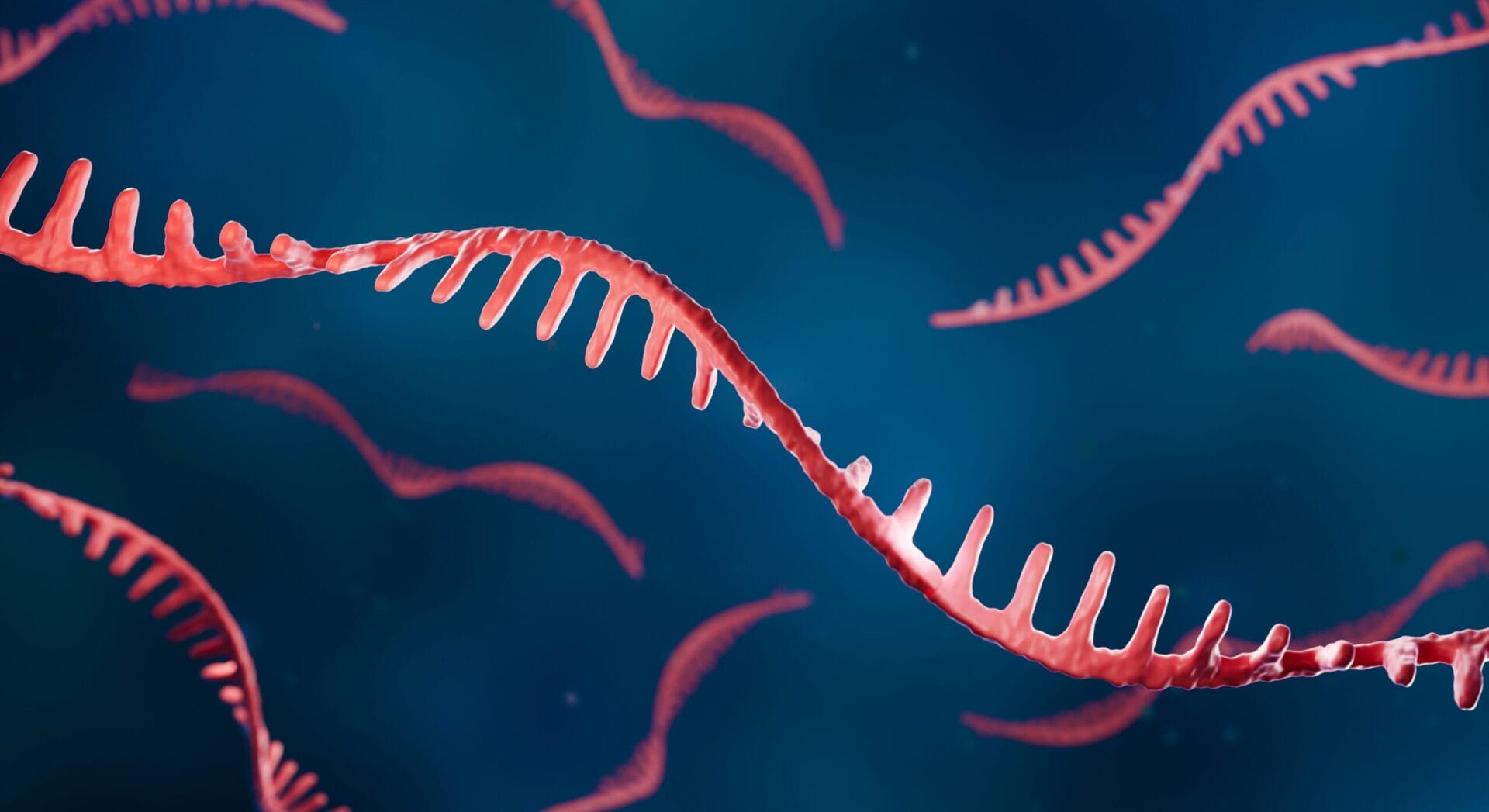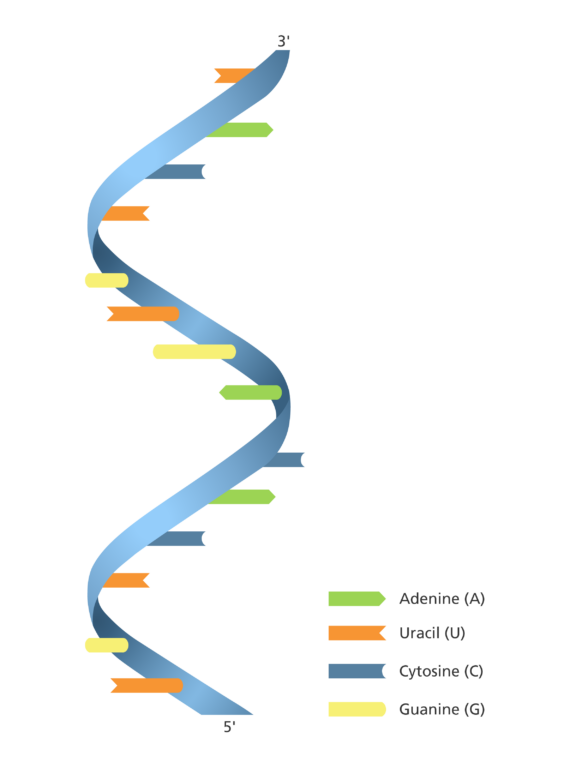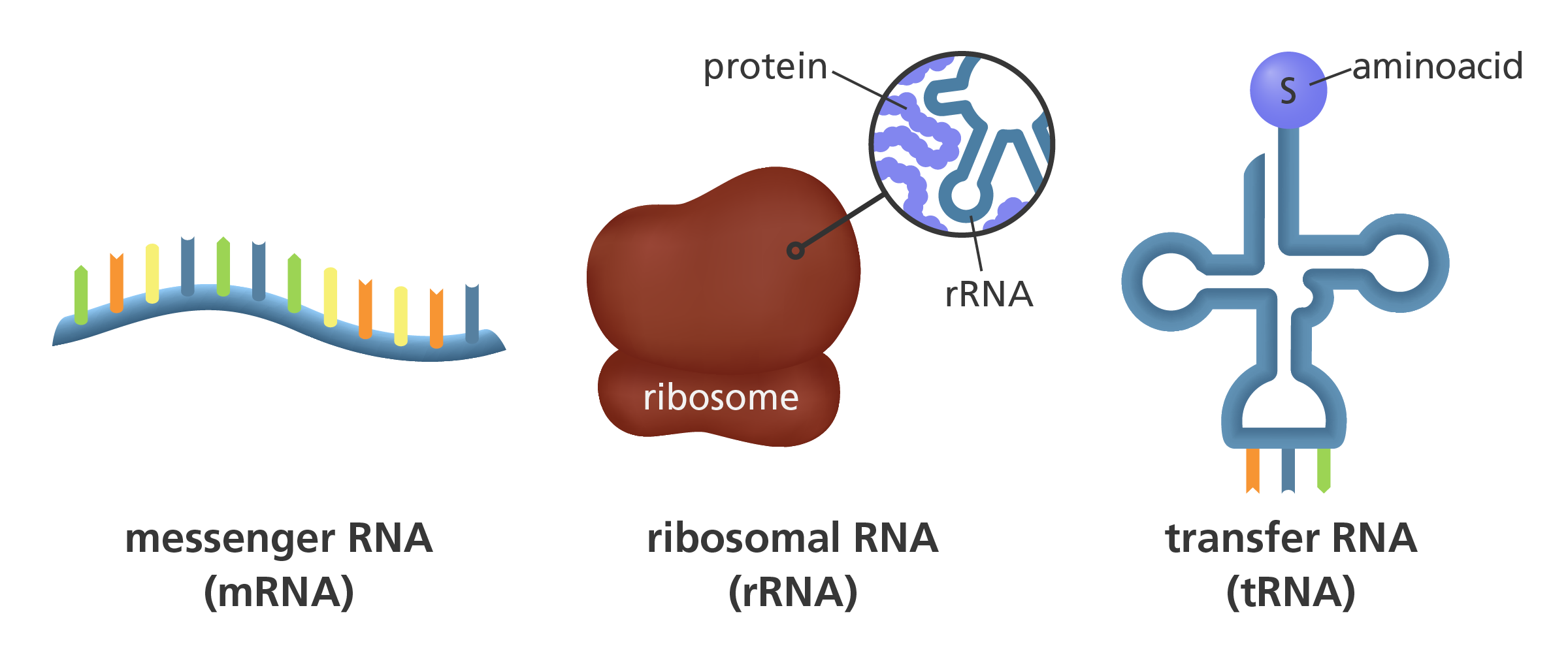What is RNA?

RNA is a nucleic acid similar to DNA, but with only a single, helical strand of bases. It plays a key role in turning DNA instructions into functional proteins.
- Ribonucleic acid, or RNA, plays a key role in turning the instructions held in the DNA of your genome into functional proteins in your cells.
- RNA is closely related to DNA, but has one different building block. A base called uracil (U).
What does RNA do?
- RNA makes it possible for DNA to act as genetic instructions, in spite of being trapped in the nucleus of the cell.
- RNA has three main roles in the cell:
It carries the instructions from the DNA in the nucleus to the ribosomes where proteins are made in the cytoplasm of the cell. - RNA picks up specific amino acids from the cytoplasm of the cell and delivers them to the ribosomes where protein synthesis takes place.
- It makes up around 50% of the structure of the ribosomes.
The structure of RNA
- RNA is closely related to DNA, but it contains a different sugar – ribose – and the base uracil (U) replaces thymine (T). The other bases, adenine (A), cytosine (C) and guanine (G), are common in both molecules.
- The RNA molecule forms a single helix.

Types of RNA
- There are three different types of RNA: mRNA, rRNA and tRNA. The basic structure of each molecule is the same single helix, but the overall arrangement of the molecules, and the roles they perform in cells, are very different.
- Between them, mRNA, rRNA and tRNA are three of the principal players in protein synthesis – the process by which the instructions in your genes are turned into functioning proteins in your cells.
mRNA
- Messenger RNA (mRNA) is formed in the nucleus on the 3’ coding (antisense) strand of the DNA in the process of transcription. Each piece of mRNA transcribed codes for a specific polypeptide.
- mRNA molecules are relatively small – unlike the huge DNA molecules, they pass out easily through the pores in the nuclear membrane.
- mRNA molecules move to the surface of the ribosomes, carrying instructions from the genes in the nucleus about the protein which needs to be synthesised.
rRNA
- Ribosomal RNA (rRNA) is the most common form of RNA found in cells – it makes up around 50% of the structure of the ribosomes. It is produced in the nucleus, before moving out into the cytoplasm to bind with proteins and form a ribosome.
tRNA
- Transfer RNA (tRNA) is found in the cytoplasm and has a complex shape. It is responsible for carrying amino acids from the cytoplasm to the ribosome surface, ready to make a protein as instructed by the mRNA.

Illustration of the three main types of RNA: mRNA, rRNA and tRNA.
Image credit: Laura Olivares Boldú / Wellcome Connecting Science